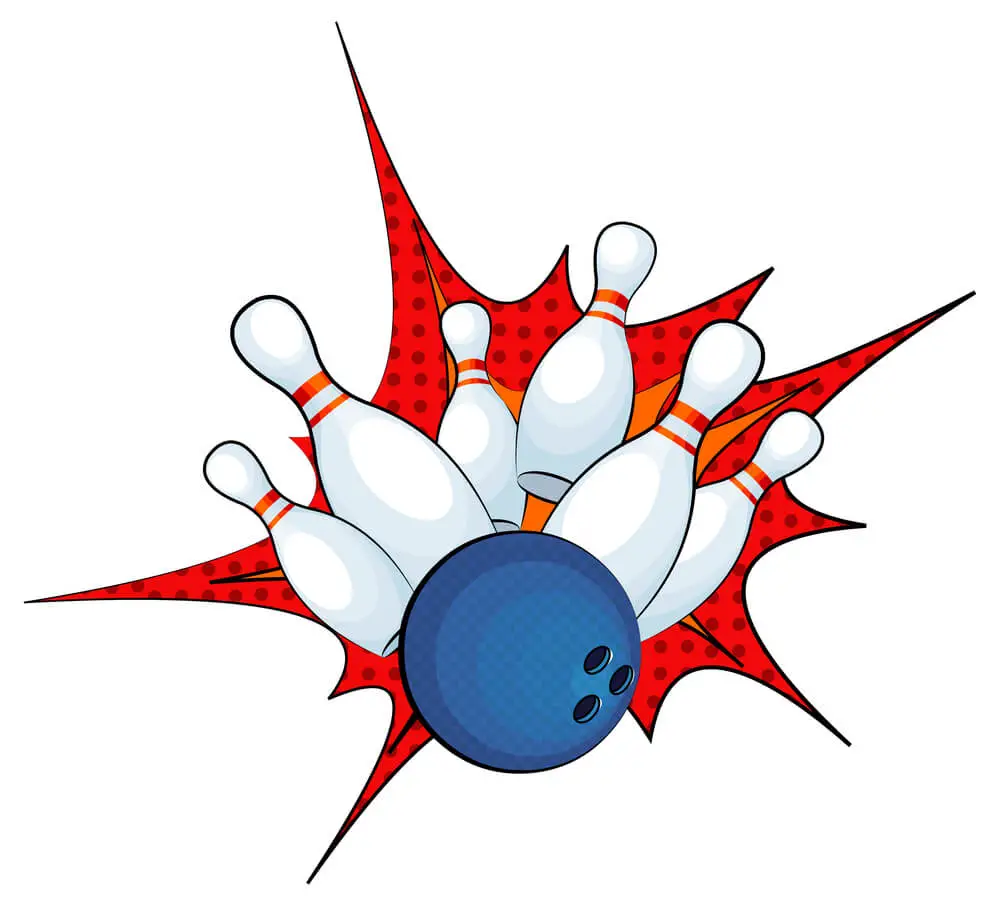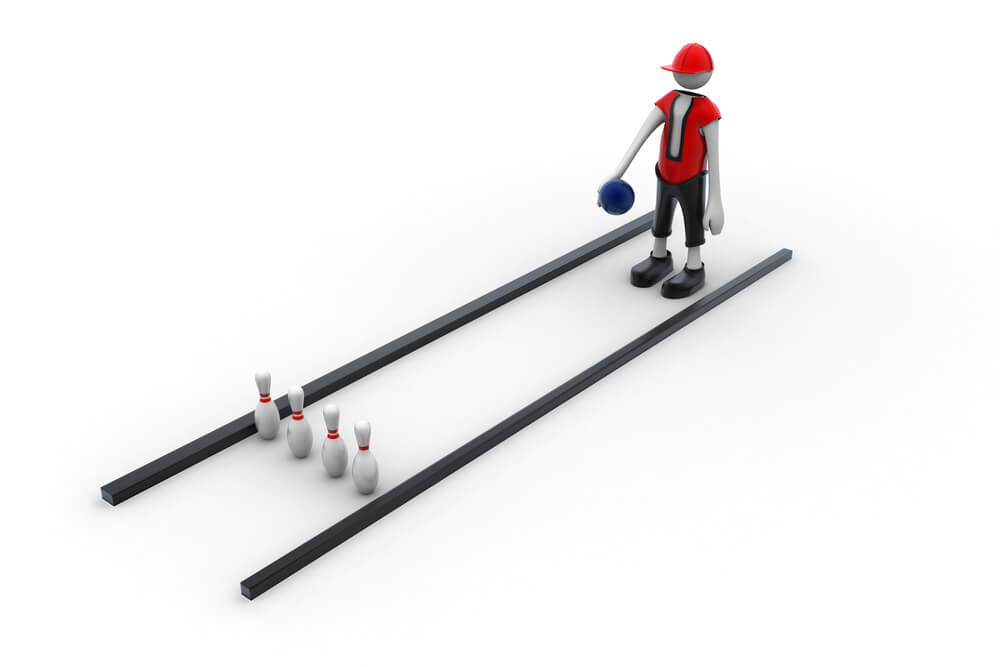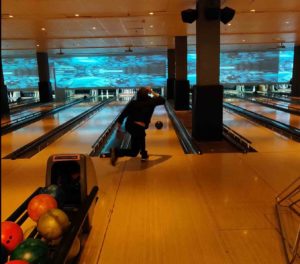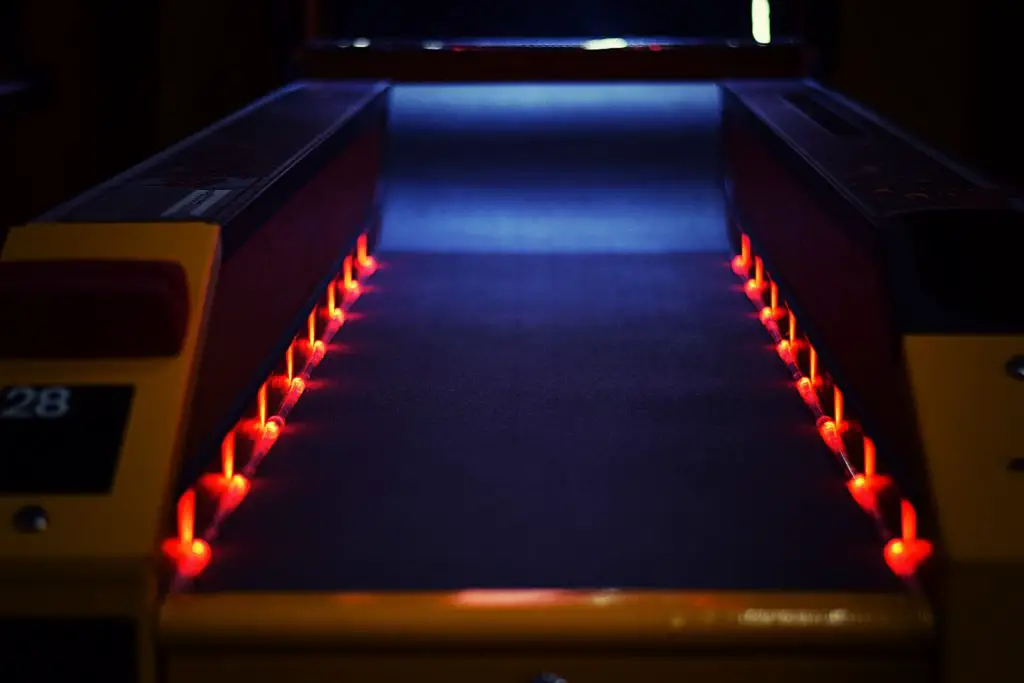What is Bumper Bowling?
Bumper bowling (sometimes referred to as bumpers) is a style of bowling in which the player rolls the ball down an alley with two rubber or plastic “bumper” balls on either side of the lane instead of ten pins. The aim is still to knock down as many pins as possible using as few deliveries as possible, but bumper balls can be used to slightly alter one’s approach. In comparison, regular 10-pin bowling has no obstacles between the foul line and the pins, so there are virtually infinite possibilities for ball position upon delivery.
When do we use the bumpers?
Most alleys provide bumpers at child height on both sides of the lane for kids under 12 who bowl on league teams, but occasionally there are lanes with only one set of bumpers. Bumper bowling is also sometimes employed when people bowl on double cork or tri-yolk layouts. The term bumper bowler refers to someone who frequently uses bumpers in their bowling game, even if the layout doesn’t technically call for them.
The USBC (United States Bowling Congress) rules state that you must not use anything other than your fingers and thumb to roll the ball down the alley. If any other part of your body touches the alley during delivery, it will be called a foul. This would include knocking down pins close enough that they touch you as you deliver the balls. On occasion, though, some players may drop their ball during delivery without it being called a foul, especially if the pin is on an adjacent lane. However, it’s discouraged that you do this because of all the great possibilities for cheating that are easily done with bumpers.
Rules can be slightly different in different countries of the world where people bowl, so check with the local bowling governing body to find out what they are. The USBC rules are used in North America and some parts of Asia where there is more of a chance of bumpers being available at your alley. If you’re playing elsewhere in Asia or Europe, for example, you should double-check to see if using them will get you disqualified from your game or result in any other undesirable situation.
Are bumpers allowed in bowling tournaments?
Bumper bowling is not allowed during official 10-pin tournaments.
Bumper bowling can be a great way to get kids interested in the game of bowling, and it’s usually how people learn the basics of ball control and delivery while they’re growing up. If you want to give your children a head start on their bowling skills before joining league play or practice, consider taking them to an alley with bumpers available so that they can get used to throwing the ball down the lane while still having fun. Since bumpers are mostly used by younger players, most alleys have rubber balls for bumpers that are less expensive than normal bowling balls, although there are some more advanced models available with air valves so that they rise back up after being knocked down by pins.
Who invented bumper bowling?
Bumper bowling is believed to have been invented in Brooklyn, New York around 1958 by a man named Larry Panciera. It was originally called the “Brooklyn Thrill” because it caught on so fast with little kids who couldn’t reach the pins easily before.
Is there anything else I need to know about bumper bowling?
Although bumpers might be fun, they’re not as challenging as regular ten-pin bowling and your scores will reflect that fact if you allow them to influence you too much. If whether or not the alley has bumpers available affects your decision on which alley you choose, don’t choose one without them even if other conditions are better because of this reason alone; try practicing your normal game first and see how good you can get at that, then come back to bumpers some other day. An excellent score on regular lanes will be harder to beat on the bumpers after some practice, so you might as well get used to playing without them first. You’ll have more fun competing against yourself instead of “playing bumper bowling against the rest of the alley”.
How do you activate a bumper in bowling?
In 10-pin bowling, a bumper is activated by lifting up on the center part of the pin deck. In duckpin bowling, you have to lift it from the side since there are no center pins.
How do you set a bumper in bowling?
Set a bumper by placing your fingers and thumb as normal for delivering a ball, but place them closer to the ground so that they touch against it. This will usually cause the front two pins on each side of the lane to be struck first instead of just one or none if you don’t use bumpers at all. You can also try pushing backward with your thumb as you begin your delivery to get more of an effect from them if necessary. Just be careful not to push too hard so that your fingers don’t slide down and accidentally foul.
The direction a bumper deflects a ball will depend on the bowling lane you’re playing on as it can vary from one to another. If there is a pattern of dots painted on each side, aim for the horizontal part of the upside-down “U” shape between them. You will most likely want to hit them with the center of your palm if possible since this is where you have most control over how much power you put behind your throw; use your wrist more than anything else in order to keep yourself from delivering too hard or getting into an awkward position with your elbows or shoulders. Try not to rely too heavily on how they look because they might be set wrong, especially if your alley doesn’t use bumpers all that often or they’re not used to doing it themselves.
Bumpers are usually set at the very front of each lane near the foul line, but if there is no rubber track around the pins then they might be placed right next to them instead. If there isn’t enough room for you to get into your normal setup position with your feet in front of the bumper (usually about 4-6 inches away), then don’t worry too much about it and simply adjust yourself accordingly; remember that anything under 3 feet 6 inches can still count as a valid throw so don’t let the lack of practice put you off by any means.
Can adults use bumpers?
Yes, as long as they use them correctly and don’t allow it to affect their game too much. It’s sometimes a good idea not to bump until you need to in order to have something extra going for you when you do it so that you can gain an advantage over your opponent by surprising them with it.
Where is the bumper area on a bowling lane?
Bumpers are usually placed at the very front of each lane near the foul line if there is one around or next to the pins if there isn’t any rubber track around them instead. They might also be set up diagonally from each other but not both parallel and diagonal at the same time. With duckpins, they’re usually only placed on either side but not both.
Is there a maximum weight of a ball in bumper bowling?
No, you can use any ball that your alley deems is within the standard range of bowling balls. It might be a good idea to have a rubber track surrounding the pins if you plan on using a heavy one, but it’s not necessary since anything under 3 feet 6 inches can still count as a valid throw.
Is bumper bowling more difficult than normal bowling?
Bumper bowling is usually easier because the boards are closer together and there are fewer pin combinations required in general. If you set bumpers on both sides of the lane then try to get used to them beforehand by not using them at first and doing some practice throws with just one or none until you’re confident enough to attempt two. You’ll time this way instead of trying to get to know the way they make you throw while you’re still learning how to use them.
How do I aim for bumper bowling?
Bumper bowling requires you to bring your arm over the ball in order to roll it instead of straight down like normal, which can take some getting used to if you haven’t done it before. Start with using the center of your palm by holding it vertically and adjusting its position until both of your feet are at least shoulder-width apart; this will be where the ball should go during every step of your approach so that it rolls correctly without any problems. Keep in mind that anything under 3 feet 6 inches can still count as a valid throw so don’t let the lack of practice put you off by any means.
Conclusion
If you have trouble adjusting to the way bumpers make you bowl, then try to get used to them beforehand by not using them at first and doing some practice throws with just one or none until you’re confident enough to attempt two. You’ll time this way instead of trying to get to know the way they make you throw while you’re still learning how to use them. If there isn’t any rubber track around your pins then don’t worry about it too much because anything under 3 feet 6 inches can still count as a valid throw. If are looking for more information check out our other article on the best bowling shoes.





